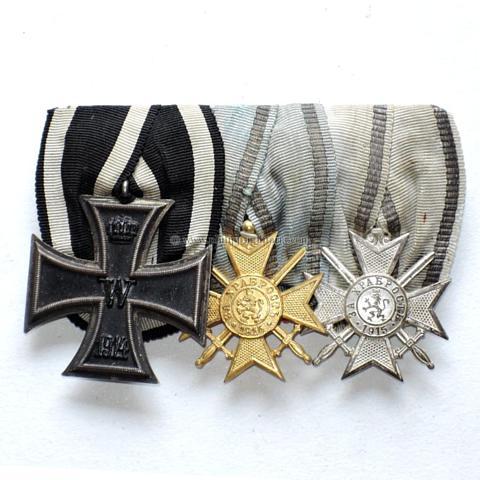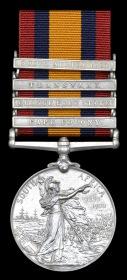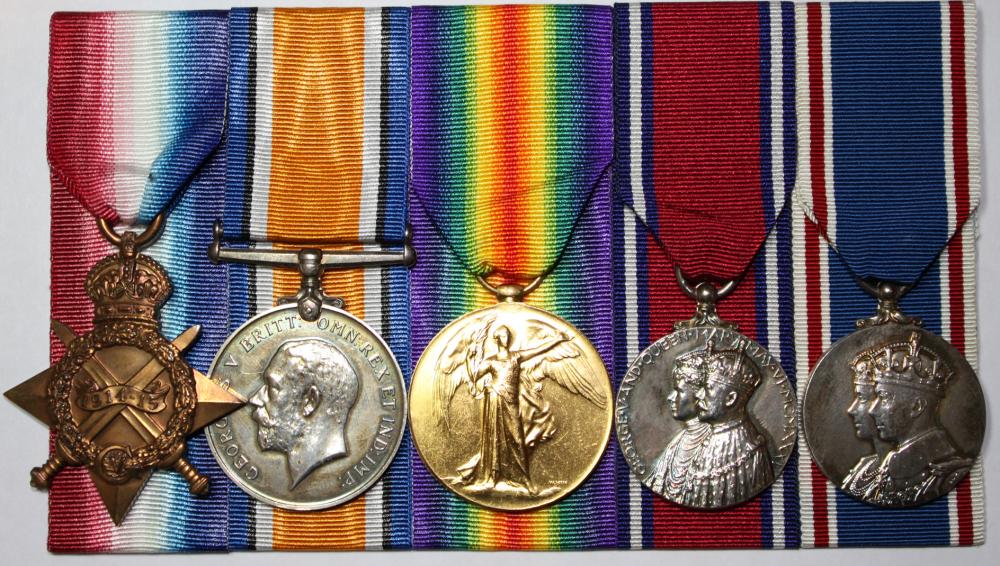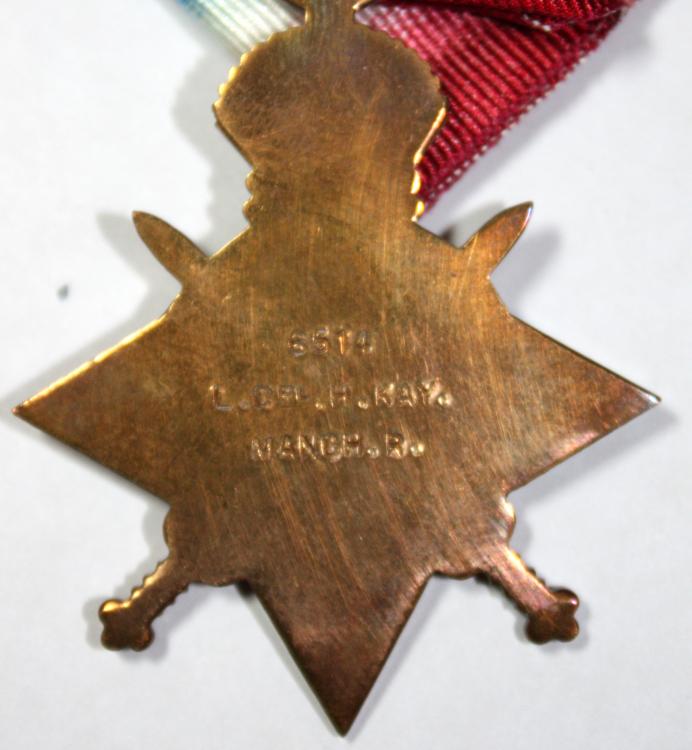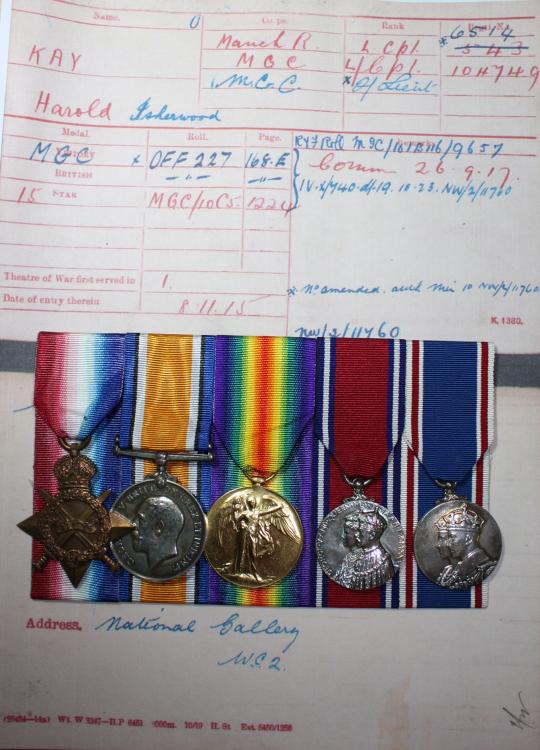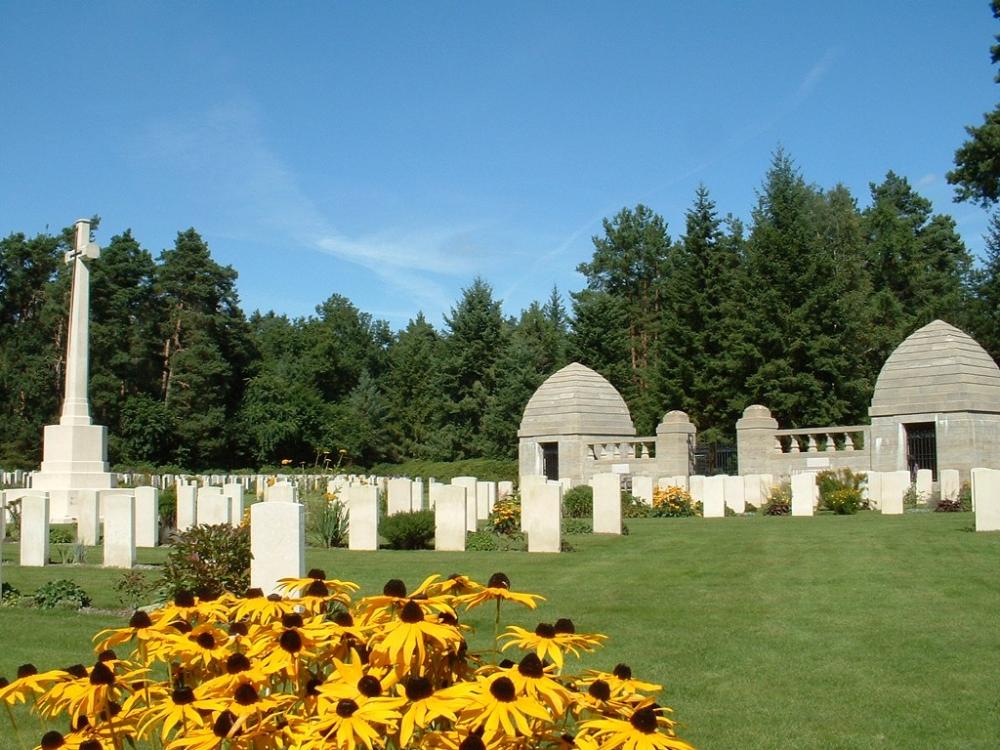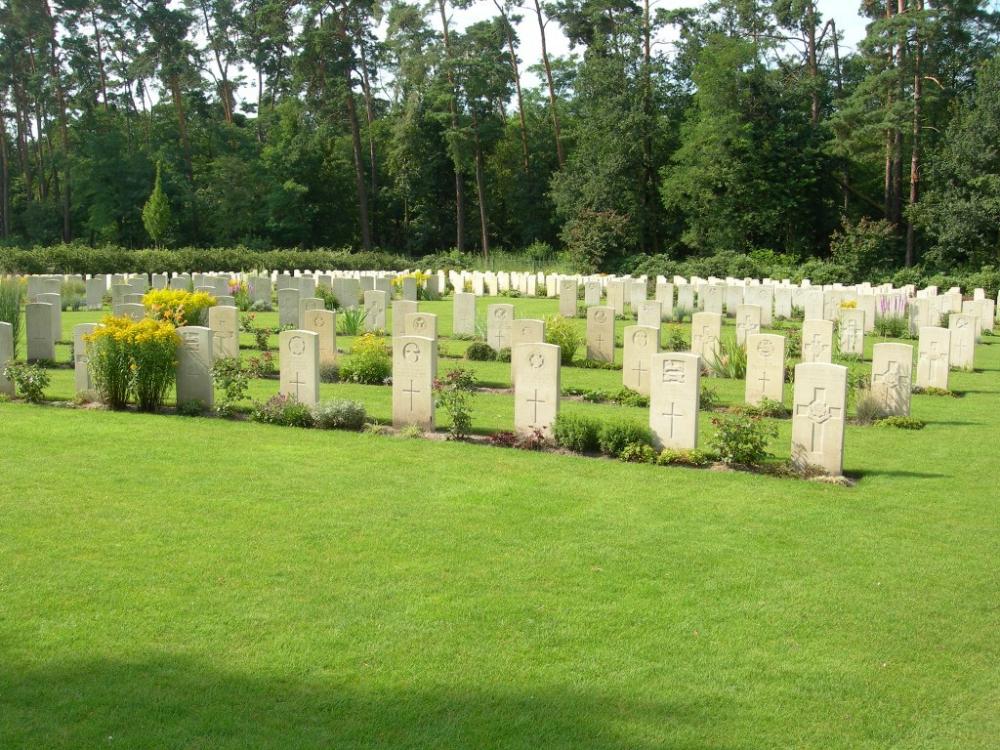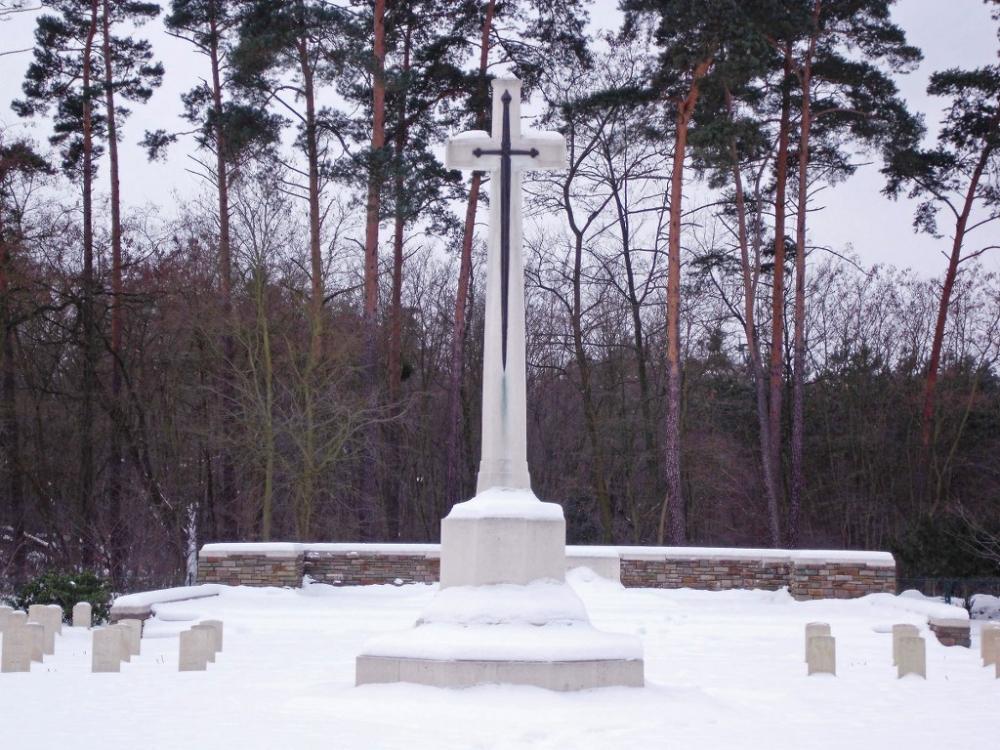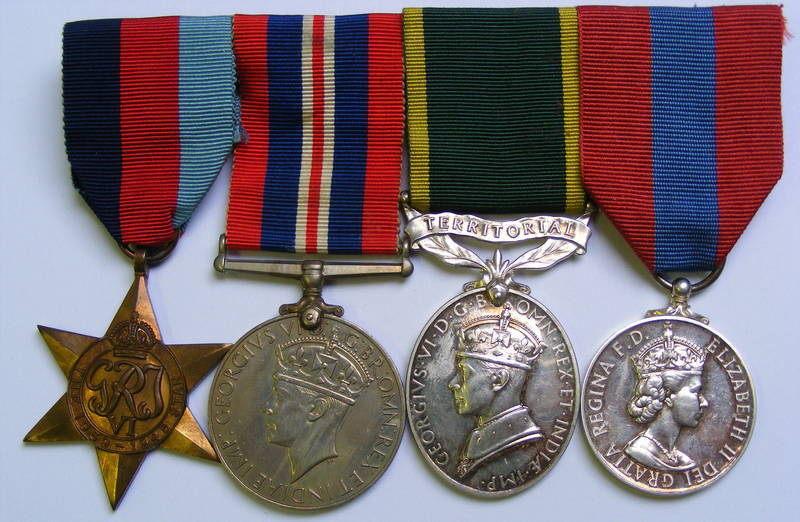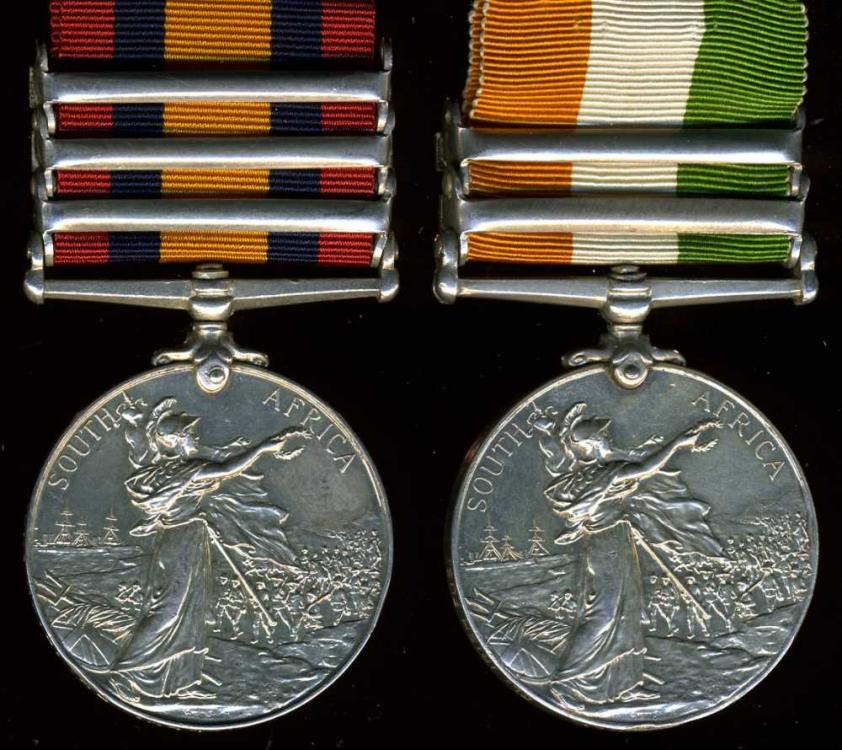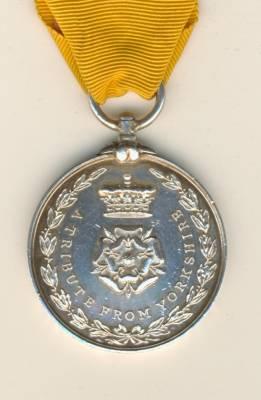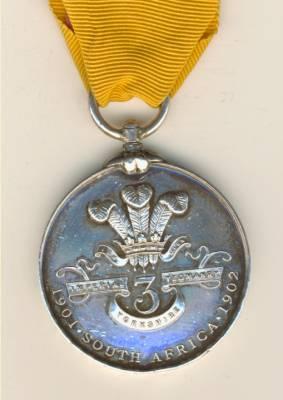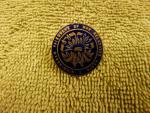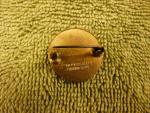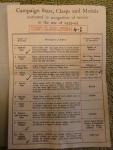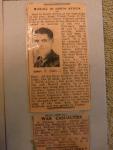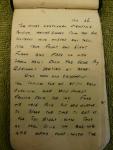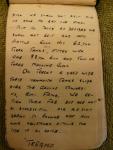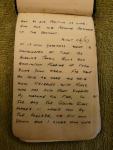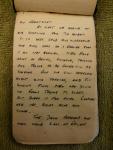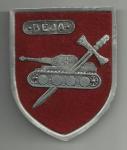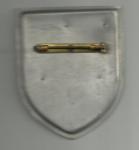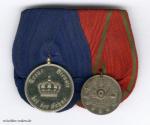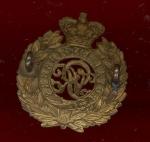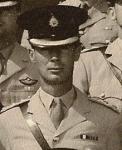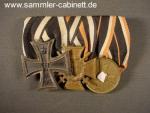-
Posts
1,802 -
Joined
-
Last visited
-
Days Won
10
Content Type
Profiles
Forums
Blogs
Gallery
Events
Store
Everything posted by azyeoman
-
Another pair for the collection consisting of a QSA with CC, T, OFS clasps to 5231 Pte. J.H. Hazzard 2nd Wilts Regt. and a KSA with SA01, SA02 to 5231 Pte. T. Hazzard Wiltshire Regt. John Hale Hazzard was born in Woodford, near Salisbury ca 1875. At 17 he enlisted in the 3rd Bn. (militia) Wiltshire Regiment in November 1895. He appears to have purchased his discharge in April 1897. He was recalled for service in the 2nd Bn. Wilts for South Africa and was captured on 14 February 1900 in the disastorous action at Rensburg. He was released when Lord Roberts took Pretoria and he joined the 1st Bn. on his return to the UK. At Rensburg, 14 were killed in action and 45 were wounded and 130 officers and men were taken prisoner. The 2nd Battalion sailed on the Gascon on 16th December 1899, and arrived at the Cape on 7 January. Along with the 2nd Bedfordshire Regiment, 1st Royal Irish Regiment, and 2nd Worcestershire Regiment, they formed the 12th Brigade under Major General Clements. The battalion had some heavy fighting in the Colesberg district after General French's mounted troops were withdrawn for the advance from Modder River. On 12th February 1900 the enemy in great force attacked the positions about Rensburg. On that day the battalion lost 2 men killed and 1 officerand 11 men wounded, the 2nd Worcesters losing much more heavily. On the 14th there was again heavy fighting, in which the Wiltshires lost 12 killed and 45 wounded, and over 100 taken prisoners. General Clements had found it necessary to order a retirement from the Rensburg positions on Arundel, in order to cover Naauwpoort Junction. From the proceedings of the War Commission it appears that the general announced he would retire at 5 am, but that he altered the hour to 12.15 am. Due notice of the alteration was not sent to two companies on outpost. When they came back to camp it had been occupied by the enemy. Endeavouring to follow the rest of the force, these two companies were surrounded and most of them taken prisoners, after making a good defence. No one could blame the two companies; they suffered because there had been an inexcusable want of care in the collecting of the regiment. Hazzard went on to marry Fanny (nee Swatton) and worked as sub-postmaster and she was an assistant in business. They had four children: Ivor, Edith Lucy, Amy Eliza and Dorthy Irene. (1911 Census) There is more info on Pte. 5231 JH Hazzard in JB Hayward & Sons book South African Field Force at http://search.findmypast.co.uk/record?id=gbm%2fbw%2f061113
-
Another Boer War PoW to a Gnr in the RFA; he'd have had to have been very close to the enemy to be captured. Queen's South Africa Medal 3 bars Belmont, Modder River, Transvaal. 21134 Gnr. R. Duncanson 18th Batt. R.F.A. Copy Medal & Casualty roll, Discharge Papers - Robert Duncanson born in Redgorton, Stanley, Perthshire, Scotland, joined the Royal Artillery at Dundee 12.7.1897, in the Boer War also served in 2nd Bty. 26.6.1901, 26th Bty. 8.10.1901 transferring to Army Reserve 12.7.1904. Duncanson served in South Africa from 26.9.1899 to 22.6.1901 & was taken PRISONER OF WAR, MODDER RIVER 28.11.1899. The 18th & 75th Bty's were the only Artillery at Modder River. In Lord Methuen's Despatch 1.12.1899 "At Modder River during the entire action the 18th & 75th Batteries had vied with one another in showing gallantry & proficiency" the 18th at Modder River suffered 1 Officer Wounded, 8 O/R's wounded & TWO O/R's P.O.W. (inc. Duncanson). An early 'casualty' & 1899 bars for the Boer War. Additionally entitled to the bar S.A.1901. The 18th Batt. sailed on the Zibenghla before war was declared, and had anything but a prosperous voyage, the machinery breaking down frequently and the water running short. Along with the 75th was the only artillery Lord Methuen had in the actions of Belmont, 23rd November 1899 (see 3rd Grenadiers), and Enslin, 25th November, and up till late in the afternoon these were the only batteries at Modder River, 28th November. At Belmont the artillery horses, not yet hardened up, were utterly unable to pursue at the close of the day—"dead-beat", Lord Methuen said. At Enslin it was much the same, but the artillery did very good work both before and during the action. At Modder River they were invaluable. In his despatch of 1st December 1899 Lord Methuen said: "During the entire action the 75th and 18th Batteries had vied with one another in showing gallantry and proficiency. I dare not write more than Colonel Hall has written, his modest account scarcely doing justice to the splendid conduct of our gunners. The 62nd Battery, marching from Belmont, came straight into action and were of great service". The 18th, 62nd, and 75th did excellent work at Magersfontein. Major General Marshall told the War Commission that the rounds expended were—by the 18th, 1012; the 62nd, 1003; and by the 75th, 924. In the eastern advance these batteries were attached to Tucker's division, and at Paardeberg fired hard from the south bank.
-
As I've not acquired anything to the collection for a very long time, I thought this would be a good addition. I especially like the way it's court mounted. Ordensspange eines Weltkrieg 1914/18 Kämpfers: Eisernes Kreuz 2. Klasse 1914, Königreich Bulgarien - Militärverdienstkreuz mit Schwertern in Silber, Königreich Bulgarien - Militärverdienstkreuz mit Schwertern in Gold.
-
More information on the above QSA and Swalkranz (sp) or Swalkrantz (sp) and actually Zwavelkranz: a farm, since considerably subdivided, in the Orange Free State (Koppies district; Free State), 25 km north-west of Heilbron. A weakly guarded British convoy of 60 waggons loaded with food for Lt-Gen Sir H.E. Colvile's column in Heilbron* left Vredefort Road* on 2 June 1900 and on the evening of 3 June found Chief-Cmdt C.R. de Wet's commandos blocking its way at Zwavelkranz. De Wet demanded its surrender and whilst Lt Corballis, Army Service Corps, in charge of the convoy, engaged him in discussion a force of some 600 men went out from Vredefort Road under Maj A.E. Haig, but returned having heard no firing. The convoy laagered and on 4 June surrendered to de Wet without opposition. HMG III pp.126-128 (not named) (not mapped); Times IV pp.262-263; Wilson II pp.668-669; De Wet pp.129-130. From A Gazetteer of the Second Anglo-Boer War 1899-1902 (Military Press, Milton Keynes 1999) My sincerest thanks to Meurig Jones for the above information. More info below from the Handbook of the Boer War published in 1910. De Wet now set himself in person to execute the task entrusted to him by Botha of getting behind the British force in the Transvaal and breaking or interrupting the line of communication in the Free State. He had not long to wait for opportunities. He left Frankfort with 800 men, and on June 2 placed himself in observation near Heilbron, where Colvile was awaiting a supply column from the railway at Roodeval. The convoy was harassed from the first by mischances. Against Colvile's orders it was despatched with but a small escort and without guns. When he heard that sufficient protection could not be given, he counter-ordered the convoy, but the message did not arrive until after it had started. On the second day of the march a body of the enemy was found blocking the road at Zwavel Kranz between Heilbron and Heilbron Road Station. It was De Wet waiting for the convoy. The news of its plight reached Heilbron Road Station, and a relieving column was sent out, which came within four miles of Zwavel Kranz. No firing, however, was heard, and the officer in command, hastily concluding that all was well, returned to the railway without finding the convoy, which next morning surrendered, the victim of easy-going indifference and neglect.
-
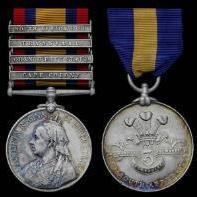
Forum purchase update
azyeoman replied to dante's topic in Great Britain: Orders, Gallantry, Campaign Medals
What a great acquisition. How fortunate you are and I'm truly amazed at your collection. Good luck and keep posting as it's always fascinating to read what you post. Thank you very much. John -
Another Boer War PoW acquisition. 1621 Serjt. A. Crutchley, S. Lanc. Regt. PoW Pieters Hill 27/2/1900 Group of three to: Sergeant A.E. Crutchley, South Lancashire Regiment consisting of a Queen’s South Africa Medal, clasps “Cape Colony”, “Tugela Heights”, “Orange Free State”, “Relief of Ladysmith”, “Transvaal” and “Laing’s Nek” (1621 Serjt A. Crutchley, S. Lanc. Regt) a King’s South Africa Medal, clasps “South Africa 1901" and “South Africa 1902" (1621 Sergt, S. Lanc Reft) and an Army Long Service and Good Conduct Medal, EVII (1621 Serjt A.E. Crutchley, S. Lanc. Regt). Ambrose Edward Crutchley was born in Kirkee, Bombay, India in 1869. He joined as a boy drummer at 14 years old on 30 May 1883 in Aden, Arabia in the South Lancashire Regiment. He served in India from 29/5/1885 to 14/1/1886 and in the UK from 15/1/86 to 29/11/99. He then served in S. Africa from 30/11/99 to 2/3/02 and then returned to India from 6/3/02 to 11/12/02 before finally serving in the UK again from 12/12/02 to 28/5/08. He was promoted to Sergeant on 5/11/1899 and awarded his LSGC (EVII) in 1904. Interestingly, his subsequent post war service was with the 3rd Battalion as a member of their permanent staff, so he had many opportunities to wear his medals. When he joined at 14, he was 4’ 11.5” tall and when he was discharged on 28/5/1908 he was 5’ 6.5” tall. He was C of E and married to Carlotta Quinn from Woolwich on Christmas Day in 1898 and had three daughters and one son. Crutchley died on 13 April 1953 at 82 from colon cancer. His death certificate states he was a retired professional musician (Oboeist) sp and that his daughter V. Edwards was present at his death. His Chelsea No. was 79706/C and the death certificate was registered in West Derby in the county borough of Liverpool. Sergeant Crutchley was listed in the Times casualty list of 9 March 1900 as having been taken prisoner by the Boers at Pieters Hill on 27 February 1900. In the Times of 11 July 1900, he was listed as being released at Pretoria on 6 June 1900. According to the rolls and service papers Crutchley is only entitled to OFS, Trans, RoL. The NFF casualty roll agrees with The Times he was PoW 27-02 on Pieter's Hill (Tugela Heights) – so why no TH clasp on the roll or service papers? Given the Tugela Heights were a severe loss for the Boers, which resulted in a pell-mell retreat north of Ladysmith, It is interesting that Crutchley was POW on the last day of the battle and that the Boers bothered to take him with them and send him to Pretoria. There are 13 records of PoWs and MIAs on 27 February at Tugela Heights, which is not many considering the thousands involved, only two for the South Lancs, but consistent as the Boers retreated at speed. Using The Times, only Crutchley is listed as being released from Pretoria, most are noted as "in hospital" in March 1900 and one died from sunstroke on 28 March (Crutchley's comrade). Overall 52 men were captured/missing in the Tugela Heights battles (14-27 Feb) and all but two occurring 21-27 Feb. There are no South Lancs PoWs or MIAs for 22 Feb. To qualify for Laing's Nek, Crutchley would have had to be on the fighting strength between 2 to 9 June. He was released in Pretoria on 6 June and it is possible to get from Pretoria to Laing's Nek in time, but were the prisoners reunited with their parent units so quickly and if he was, then why is there no mention of the LN clasp on the roll or service papers. http://www.labuschagne.info/pieters-hill.htm#.VUg_0ihAcg8 http://www.britishbattles.com/great-boer-war/val-krantz.htm
-
The latest is a very nice addition if I may say so myself and for the first day of the Kaiser's Battle on 21 March 1918. This is an historically important medal group to an ordinary soldier of the Manchester Regiment, who was commissioned as an officer in the Machine Gun Corps, Taken Prisoner of War and who then put all that fighting and duty behind him to become the Keeper of the National Gallery in London and a well known and respected art expert. The WW1 medals are officially and correctly impressed as they should be. They are all in superb condition. The Jubilee and Coronation medals are un-named as issued. The naming is as follows: 1915 Star:- 6514 L/CPL H. KAY. MANCH. R. Pair:- 2. LIEUT. H. I. KAY Harold Isherwood Kay was born on 19 November 1893, at Turton, near Bolton, Lancashire, the son of Alfred Kay and Margaret Isherwood. By 1911 they had moved to Upper Wilton Street, Heaton Park, Manchester. In 1914 Harold enlisted in No. 5 Platoon, ‘B’ Company, 16th (1st City)(S) Bn. The Manchester Regiment as Private 6514. His photograph is in the Platoon photograph of the Manchester City Pals Book of Honour, copies included. He did his initial training in Heaton Park and the temptation to just nip home as and when must have happened to him. He went to France on 8.11.1915. He fought on the Somme before being selected for Officer Training and on 26.9.1917 was commissioned into the Machine Gun Corps as a 2nd. Lt. (London Gazette 3.10.1917). On the first day of the German Spring Offensive on 21.3.1918 he was in 53rd Company MGC when he was captured by the Germans and sent to Karlsruhe POW camp for the rest of the war. He was allowed to send two telegrams home while there. His International Committee of the Red Cross POW cards still exist, copies shown below. He was released after the war and relinquished his commission on 1.9.1921 (LG 8.12.1921) He was employed by the National Gallery from 1919 until his death in 1938, holding the posts of Photographic Assistant from 1919-1921; Assistant from 1921-1934; and Keeper and Secretary from 1934-1938. He married Barbara Cox, daughter of Oswald Cox in 1927, there were no children. During his employment at the National Gallery, Harold Isherwood Kay travelled extensively in Britain and Europe viewing paintings held by galleries, museums, churches, art dealers and private houses. The notebooks he made contained information about the paintings he saw. The contents and original arrangement of the notebooks suggest that his travel was a mixture of official business for the National Gallery, private research, and work for the Estate Duty Office. Kay contributed to a variety of art magazines including The Burlington Magazine and The Connoisseur. Two of his most noted articles are 'John Sell Cotman's Letters from Normandy' in the Walpole Society Annual, 1926 and 1927, and 'A Survey of Spanish Painting' (Monograph) in The Burlington Magazine, 1927. From the late 1920s until his death in 1938 Kay was working on a book about the history of Spanish Painting which was to be published by The Medici Society. He completed a draft but the book was never published. He was awarded the George 5th Silver Jubilee Medal in 1935 in his position as Keeper of the National Gallery and in 1937 was awarded the George 6th Coronation Medal in the same position. He was a member of the Union and Burlington Fine Arts Clubs. He died on 10 August 1938 following an appendicitis operation, aged 44. The Harold Isherwood Kay papers were acquired by the National Gallery in 1991. When Kay died in 1938, his papers were inherited by his widow, Barbara. Following Barbara Kay's death in 1979, they were transferred to the custody of her sister Mrs Honor Bullock who transferred 'various archival material which she felt ought not to be lost' to David Piper, Director of the Ashmolean Museum, Oxford, and a family friend. In the same year (1979), Piper showed the Kay Papers to Ellis Waterhouse who made suggestions about where different sections should be deposited. By 1991 the papers were in the custody of Cecil Gould (National Gallery Assistant, 1946-1962; Deputy Keeper, 1962-1972; Keeper, 1973-1978), presumably having been transferred to him following Piper's death in Dec 1990. Gould gave the papers to the National Gallery in 1991. The Harold Isherwood Kay papers include materials relating to Kay's work. The archive includes: 1. Notebooks recording visits to museums, galleries, art dealers, and private houses in Britain and Europe to view works of art for Kay's work at the National Gallery, for valuations he undertook for the Estate Duty Office, and for his private research. The notebooks include descriptions of paintings, drawings and sculptures as well as biographical details about painters and collectors, comments on the architectural features of some of the houses he visited, and information about the provenance and future plans for the sale or relocation of some of the paintings he viewed. Some of the notebooks contain Kay's sketches of individual works. 2. Research notes and drafts for his proposed book on the history of Spanish Painting. 3. Correspondence with his friend and one time colleague at the National Gallery, Ellis Waterhouse. 4. A small file of research material and correspondence about Willem Van de Velde (both the Elder and the Younger).
-
The latest acquisition is a WW1 pair to 78702 Pte. G. W. Rennison, DLI who died as a PoW on 30.6.1918 and is buried in Berlin South Western Cemetery. Since he is buried in Plot 1 E 1, he was enterned in PoW Camp Heilsberg. (See below information on Heilsberg).George William Rennison served in the 1/6TH D.L.I and died as a PoW in Germany. He was born in Radcliffe, Northumberland and enlisted in Amble while living in Acklington. He was previously served in the 51st Young Soldiers Bn. and was only 19 years old when he died. He was the son of James and Ann Rennison of Sunnythwaite, Penton, Carlisle. Historical InformationIn 1922-23 it was decided that the graves of Commonwealth servicemen who had died all over Germany should be brought together into four permanent cemeteries. Berlin South-Western was one of those chosen and in 1924-25, graves were brought into the cemetery from 146 burial grounds in eastern Germany. There are now 1,176 First World War servicemen buried or commemorated in the Commonwealth plot at Berlin South-Western Cemetery. The total includes special memorials to a number of casualties buried in other cemeteries in Germany whose graves could not be found. The following cemeteries are among those from which graves were brought to Berlin South-Western Cemetery: ALTDAMM PRISONERS OF WAR CEMETERY, 8 kilometres East of Stettin, in the Province of Pommern (Pomerania), contained the graves of 46 soldiers from the United Kingdom, three from Newfoundland and two from Canada, who died in 1915-1918. BUDEROSE PRISONERS OF WAR CEMETERY, near Guben, in the Province of Brandenburg, contained the graves of 18 soldiers from the United Kingdom, one from Canada and one from Australia, all of whom died in 1918. CROSSEN PRISONERS OF WAR CEMETERY, 3 kilometres East of Crossen, on the river Oder, in the Province of Brandenburg, contained the graves of 66 sailors and soldiers from the United Kingdom, one from Australia and one from South Africa all of whom died in 1918. DOBERITZ PRISONERS OF WAR CEMETERY, about 19 kilometres West of Berlin, in the Province of Brandenburg, contained the graves of 38 sailors and soldiers from the United Kingdom who died in 1914-1918. HASENHEIDE GARRISON CEMETERY, on the South side of the city of Berlin, contained the graves of 369 Russian, 125 French, and 58 Belgian, American, Italian, Rumanian, Portuguese or Serbian soldiers; 63 sailors, soldiers and Marines from the United Kingdom; and one Indian soldier. HEILSBERG PRISONERS OF WAR CEMETERY, in Ostpreussen (East Prussia), contained the graves of 50 soldiers and one Marine from the United Kingdom, who died in 1917 and 1918. Only twelve of which were found when the graves were being recovered; the remainder are still buried at Heilsberg. KLEIN WITTENBERG OLD CEMETERY, 3 kilometres West of Wittenberg, in the Prussian province of Saxony, contained the graves of 23 soldiers, one Marine and eight civilians from the United Kingdom and one soldier from India, all of whom died in 1915; the NEW (or PRISONERS OF WAR) CEMETERY, those of 71 soldiers and three civilians from the United Kingdom, two soldiers from Canada and one from Australia, who died in 1915, 1917 and 1918; and WITTENBERG OLD SMALL CEMETERY those of two soldiers from the United Kingdom who died in 1914 and 1915. The first and third of these cemeteries are associated with the outbreak of typhus at the Wittenberg camp in December 1914. LAMSDORF PRISONERS OF WAR CEMETERY, in Schlesien (Silesia), contained the graves of 81 soldiers from the United Kingdom, one from Australia and one from New Zealand, who died in 1917-1919 (it was used for French burials in 1870-71). MAGDEBURG MILITARY CEMETERY, in Prussian Saxony, contained the graves of 24 soldiers and one Marine from the United Kingdom who died in 1915-1918. MERSEBURG TOWN CEMETERY, in Prussian Saxony, contained the graves of 12 soldiers from the United Kingdom who died in 1914-1917, and the PRISONERS OF WAR CEMETERY those of 33 soldiers from the United Kingdom who died in 1917-1918. OPPELN TOWN CEMETERY, in Upper Silesia, contained the graves of 41 soldiers from the United Kingdom who died in 1921-22. They belonged to the British force stationed in Upper Silesia during the Plebiscite. Thirty of them, who died after the legal termination of the war, were left buried at Oppeln. SCHNEIDEMUHL PRISONERS OF WAR CEMETERY, in Posen, West Prussia, on the borders of Poland, contained the graves of 76 soldiers from the United Kingdom, five from Australia, three of the Royal Guernsey Light Infantry, and one from Canada, who died in 1915-1918. Eighteen of the graves could not be recovered. STARGARD PRISONERS OF WAR CEMETERY, in Pomerania, contained the graves of 37 soldiers and one Marine from the United Kingdom, two soldiers from New Zealand and one of the Royal Guernsey Light Infantry, who died in 1917-1918. STENDAL PRISONERS OF WAR CEMETERY, in Prussian Saxony, contained the graves of 140 soldiers from the United Kingdom, two from Canada and one from Newfoundland, who died in 1917-1918. ZERBST (HEIDETOR) CEMETERY, in Anhalt, contained the graves of two soldiers from the United Kingdom who died in 1914-1915, and the PRISONERS OF WAR CEMETERY those of 45, who died in 1917-1918.
-
A new Battle of France/Dunkirk/St. Valery group. Edwin Raymond Cushing Landon was born in Aldershot in 1902. A pre war regular he was taken prisoner in June 1940. His prisoner status was announced in the St Georges Gazette in October 1940. Landon was held in Stalag 383, which was in Hohen Fels, Bavaria. He survived the war and went to work as a postman in Throckley, Newcastle-on-Tyne in 1933 (LG 8.11.1933 p. 5877). Upon his retirement, he was awarded the Imperial Service Medal for his service as a postman. TEM = 5222 SJT E R C Landon NF ISM = Edwin Raymond Cushing Landon erc landon Postman 1933.pdf ' alt='' class='ipsImage' > erc landon Postman 1933.pdf
-
A new Boer War pair to 4404 Pte. E. Connolly, 1st Bn. Royal Irish Fusiliers QSA (with ghost dates) and with Talana, OFS & Transvaal clasps and KSA with SA01 & SA02 clasps Connolly was captured at Nicholson's Nek in October 1899. It was another early disaster for the British Army. Interestingly, Connolly was later released at Lourenco Marques in Portuguese Mosambique on 13 Septeber 1900. Churchill escaped and went to Lourenco Marques (now Maputo). The Battle of Nicholson’s Nek was one of two British defeats around Ladysmith that came to be known as “Mournful Monday”, or the battle of Ladysmith. After a brief attempt to defend a line closer to the Transvaal, at Dundee, Lieutenant-general Sir George White, the British commander in Natal, had withdrawn to Ladysmith. The British army in Natal had concentrated in Ladysmith by the early morning of 25 October. Several Boer columns were converging on the town, but by 29 October were not all in place. White decided to launch a pre-emptive strike on those forces that were already in place to the north east and east of the town. He also dispatched a force to Nicholson’s Nek, north of Ladysmith, either to prevent another Boer column from interfering in the main fight around Ladysmith, or to block one possible route a defeated Boer army might take from Ladysmith. The British force consisted of six companies from the Royal Irish Fusiliers (520 men), five and a half from the Gloucestershire Regiment (450 men) and No. 10 Mountain Battery (140 men), all commanded by Lieutenant Colonel Frank Carleton. Their supplies were carried on the backs of well over one hundred mules, being led by the soldiers. It would be the mules that would wreck the expedition. Carleton’s force did not get moving until late on 29 October. By two in the morning on 30 October, Carleton decided that it was too late to continue on to Nicholson’s Nek, and decided to camp on Tchrengula Hill, a steep hill to the side of the trail. During the attempt to climb Tchrengula Hill, the mules stampeded, taking with them all of the water, the heliographs, most of the ammunition and enough parts of the artillery to make all of it useless. The British force was now in a very vulnerable position, and really should have retreated back to Ladysmith. Instead, Carleton decided to remain on Tchrengula Hill. Over the next two hours he managed to get most of his men onto the top of the hill. However, the British chose to camp on the southern, slightly lower, end of the hill, leaving the higher northern end unguarded. The British line was poorly laid out, making it hard for the two wings to communicate, but the soldiers worked to create a reasonably strong line of stone ‘sangers’ or breastworks. Meanwhile, the Boers had been alerted to the British presence by the noise of the mules. Around 500 men took up place at the north end of Tchrengula Hill, and at dawn opened fire on the British position. This was the empty battlefield that the British were so bad at dealing with at this stage. The Boer riflemen were scattered amongst the rocks on the top of the hill, almost invisible, and refusing to present a target for disciplined British musketry. Boer casualties were reported as four dead and five wounded, while the British suffered 38 dead and 105 wounded. Other Boer forces were already on neighbouring hilltops, from where they were able to fire into the sides of the British force. The battle ended in chaos. One part of the British line misinterpreted an attempt to warn them of a flanking attack as an order to pull back, and abandoned the line of sangers, which the Boers quickly seized. The Gloucestershire Regiment had taken the brunt of the fighting so far. Just after noon, Captain Stuart Duncan, apparently convinced that his isolated detachment was alone on the hill, raised the white flag. Where this differed from the Boer action at Elandslaagte was that when Carleton saw the Boer’s rise to accept the surrender, he decided that he had no choice but to accept the white flag and surrender the rest of this force. The Royal Irish Fusiliers, who had yet to be heavily engaged, were enraged by this decision, but had to accept it. In contrast, when part of his force had raised the white flag at Elandslaagte, General Kock had responded by leading a counterattack in person. The two sides still had a very different conception of the use of the white flag. Carleton’s decision to surrender was almost certainly correct. From his position on Tchrengula Hill he could see back to Ladysmith, where White’s main attack had also failed. His own ammunition was running short. Retreat would have been impossible. However, the result was the biggest surrender of British troops since the Napoleonic Wars. Close to one thousand British soldiers entered captivity after the battle. The defeat at Nicholson’s Nek and the failure of White’s main attack at Lombard’s Kop ended any chance of avoiding a siege. The above was written by: Rickard, J (5 February 2007), Battle of Nicholson’s Nek, 30 October 1899, www.historyofwar.org/articles/battles_nicholsons_nek.html Here's another good site with information on the battle. http://www.britishbattles.com/battle-of-ladysmith/ And another: http://www.victorianweb.org/authors/doyle/boerwar/7.html ' alt='' class='ipsImage' > ' alt='' class='ipsImage' >
-
Here's a rather rare addition to the collection. Not that the medal is rare as it's not, but to a PoW it is. It's a Yorkshire Imperial Yeomanry Medal 1900-1902 to 32271 Pte. J.H. Baker, 109th Imp. Yeo. (Yorkshire Hussars) who was captured along with Lt. Stewart. It is mentioned in Lt. Col. R.L. Birkin's DSO book, History of the 3rd Regiment Imperial Yeomanry 28-1-00 to 6-8-02 on page 120. "Moving out of Haamelfontein at midnight on November 22nd, the 109th accompanied C Squadron of the 5th Lancers and two guns to Rivers Vleis and came into touch with Maude's Commando about 10.0a.m. on the morning of the 23rd. Lieutenant Stewart accompanied by his servant, Trooper Baker, went out with a small patrol of Lancers reconnoitering. They were surprised and outnumbered by the enemy. Lieutenant Stewart was wounded and both he and Baker were captured. Thereupon one hundred men were ordered out and towards nightfall came into touch with the enemy, who immediately opened fire, which, after being replied to, was discontinued..." Baker was eventually invalided Home on 25 April 1902. He is entitled to a QSA with five clasps: CC, OFS Trans, SAO1 and SA02. If anyone knows its whereabouts, please contact me as I would love to unit them again.Yorkshire Tribute Medal 1901-1902, 32271 Pte. J.H. Baker, 109th Imp. Yeo., Yorkshire Hussars. (WO 100/121/F124). Entitled to Q.S.A. with 5 clasps. 2nd/1st Co. Troop 4. Servent to Lt. R.C.J. Stewart. Lt. wounded and Baker captured 23.11.1901- Grasfontein (p.120 Birkin). WO 97/5209 John HenryBaker was born in Hull and joined up as a 24 year old trade clerk and ex-aprentice at Keyworth Walker Co. in Hull. Height 5'6.75" Green eyes & brown hair. He served from 23.3.01 to 13.5.02 and was discharged Medically unfit due to ill health on 14.6.1902 at the Royal Hospital, Chelsea. His father was William Baker of 145 Craven St. Hull A total of 383 officers and 9,170 NCOs and men were taken prisoner in the course of the war. 97 men died in captivity. The grounds on which each person was taken prisoner was investigated. One of the publications from The Royal Commission on the War in South Africa contains the results of these enquiries. For the most part, prisoners were exonerated but in some instances the captives were later subject to disciplinary action. The Royal Commission on the War in South Africa lists all surrenders, gives brief details of the incident, numbers involved and the outcome of the investigation. The Boers were even less prepared for prisoners of war than were the British. The first crop came in the first few days of the war, at Kraaipan. Officers were held at the State Model School in Pretoria. Their most famous 'guest' was Winston Churchill who was captured at Frere. NCOs and men were held separately at Waterval, north of Pretoria, in the Transvaal. In March 1900, officers were moved to a new camp at Waterval. It was described as a 'long, white shanty, with a fairly large compound, enclosed by formidable barbed-wire entanglements . . . There are electric lights all around the enclosure making escape a matter of difficulty. Inside, the place looks more like a cattle shed than anything else. A long, galvanised iron building, divided into sleeping rooms, and four small bath rooms, a servants' compartment and kitchen, and eating rooms . . . There is no flooring. The drains consist of open ditches, while the sanitary arrangements are enough to disgust any human being.' With the Flag to Pretoria states 'The plight of the captured Colonial and Uitlander officers was far worse. They were treated as common felons and thrown into gaol.' Lieutenant Colonel Hunt, captured at Colenso, reported to Lord Roberts that the medical arrangements were inadequate. Lord Roberts forwarded the complaint to the Boers and added that he was no more impressed with the rations for other ranks, sanitary arrangements and treatment of the sick. Winston Churchill was the most famous of the people to escape from prison. Incarcerated in the State Model School, he reportedly climbed the fence, boarded a train and hid in a coal mine near Middelburg. He ten took another train to Portuguese territory. In March 1900, Captain Haldane, Lieutenant le Mesurier and Sergeant Brockie escaped from the school. They hid beneath the floor. During the removal of prisoners to Waterval, they stayed hidden and were able to stroll out of the emptied prison. The advancing British made the retention of prisoners increasingly problematic. When the British troops entered Pretoria on 5 June 1900, 129 officers and 36 other ranks overpowered their guards just prior to the arrival of the troops. On 6 June, 3,187 non-commissioned officers and men were released at Waterval. ' alt='' class='ipsImage' > ' alt='' class='ipsImage' >
-
A very nice addition to the collection for the battle of Sidi Nsir; a famous and important battle in the annals of the Royal Artillery. Spike Milligan was in North Africa at the time (himself a Gunner in 19 Battery, 56th Heavy Rgt RA) and he mentions this battle in the second book of his memoirs – “Rommel? Gunner Who? – A confrontation in the desert.†– on page 107. To quote: “They nearly broke through at Hunt’s Gap, but an incredible resistance by 5 Hampshires and 155 Bty RA for over twelve hours (the latter were finally overwhelmed) decimated the Bosch so much – he had to stop.†By investigating this action, I read of their incredible valour: I think the whole 155th Battery deserves a VC. Every single one of them – brave men indeed! SGT. F. NOON, ROYAL ARTILLERY - PoW 1943, WITH HIS DIARY DESCRIBING HIS CAPTURE AND EARLY CAPTIVITY 1939-45 Star, Africa Star bar '1st Army'; Defence & War Medals. All unnamed. With the original issue slip for the four medals and bar and two related newspaper cuttings (see below, which give biographical details and a photograph of the recipient. His original pocket notebook which gives details including a list of the nine men in his section, a list of ammunition, some U.K. addresses, and an account of the action in which he was taken prisoner along with notes on the first three months of captivity. He was taken prisoner at Sidi Nsir on 26/2/43 after "ten hours continual fighting.....machine-gunned from the air, plastered with mortar and shell fire from front and right.....fired on with small arms from the rear by Germans dressed as Arabs.....guns, men and equipment sail through the air after each explosion.....into battle roll his 62-ton Tiger tanks.....we return their fire.....our A.P. shot seems to bounce off him.....and so our position is overrun". With copy PoW papers - Frank Noon was born on 11/11/14 and enlisted on 5/10/34; he was taken prisoner on 26/2/43 whilst with 172nd Field Regt. R.A. (46th Division, 1st Army). He was later held at Campo 66 in Italy 18/3/43 to June 1943, Campo 82 from June to September 1943, and finally at Stalag 4B at Muhlberg in Germany from then until the end of the war. He lived at 16 Mona Terrace, Rhyl, North Wales, and died in Clwyd in October 1987. With further details of this action - 155th Bty. R.A. was based at Sidi Nsir Station supporting the 5th Bn. Hampshire Regt.; the Germans launched a very heavy attack, which if it had succeeded, would have jeopardised the Allied position in Tunisia. Of the 135 men in the battery only nine escaped, the remainder being killed or captured. This action was featured in "The War Illustrated" on 9/9/43 under the heading "The Glorious 155th Battery Fought To The End". The Glorious 155th Battery Fought to the End The War Illustrated, Vol. 7, # 158, p. 77, 9/9/1943 Long and glorious is the history of the Royal Regiment of Artillery, but it may be doubted whether it contains any finer story than that of the stand of the 155th Field Battery on Feb. 26, 1943, in Northern Tunisia. Here is the official account, with photographs of one of the nine survivors and five others of the heroic band reported to be prisoners-of-war in Italy.Lord Milne, veteran general of the last war, was filled with indignation. Rising from his seat in the House of Lords he criticized in severe terms the propaganda department of the War Office, and pointed out one or two notable omissions – the Rifle Brigade, the Royal Corps of Signals, and the cavalry regiments – from Lord Croft's recent statement giving the names of the regiments which had been fighting in Tunisia. Why were we told so little about our units and their leaders, he asked. Today wonderful deeds were being done about which people were told nothing. He would give on example. A battery of artillery was told to cooperate with an infantry regiment. At the end of the battle, when morning broke, every officer and 95 per cent of the men were lying round their smashed guns. The Germans knew what had happened; the Army knew what had happened; but when the report came to the colonel of the regiment it was marked "secret". Secret from whom? It was one of the things that ought to have been read by every unit of the British Army. That was on June 3. Two days later the Ministry of Information issued an official account of a field battery's most gallant action in Tunisian fighting. There could be no doubt that this was the incident to which Lord Milne had referred. The date was February 26, 1943. The place was Sidi Nsir, in the hills twelve miles east of Hunts Gap, near Beja. The battery was the 155th who, with a battalion of the Hampshires, had been ordered to hold the place. If Sidi Nsir fell Beja, the key to the northern Allied line, already threatened by a strong German force, would fall too. With Beja in their hands the enemy would soon have made the Medjez el Bab salient untenable, and transport to and from the Algerian ports extremely difficult. They did not get Beja, because the time won by the 155th Field Battery and the Hampshires at Sidi Nsir sufficed to put Beja into a state of effective defence. But the artillerymen paid the price. On the evening of February 25 no signs were visible of enemy movement. The Divisional Commander, his Commander Royal Artillery, and the C.O. of the Field Regiment to which 155 Battery belonged spent two hours examining the countryside from a dominating observation post and could detect nothing ominous. But during the night Verey light signals began to go up in the hills around Sidi Nsir, and at 6.30 next morning heavy mortar fire opened on the British guns. After 45 minutes shelling came a direct assault. German tanks drove down the road from Mateur. Four 25-pounders leapt into action, No. 1, specially placed at the top of a slope to cover the Mateur approach, firing over open sights. Three tanks were hit as they attempted to pass through a minefield and the road was blocked. Checked in their initial thrust, the enemy sent in lorried infantry who turned the battery's southern flank under cover of a hill. Things began to look serious. The highest observation post, from which the whole countryside could be surveyed, was heavily attacked, its wireless transmitter was smashed, and its telephone lines were cut. Eight Messerschmitts swooped down on the guns and raked each in turn with machine-gun and cannon fire, inflicting heavy casualties. This manoeuvre was repeated many times. Several vehicles on the road back to Hunts Gap were wrecked and left burning, and the precious ammunition they carried had to be salvaged at imminent risk by the gunners. Bivouac shelters and dumps were in flames. Many men were wounded or killed. But the C.O. of the Regiment, visiting the battery, found all ranks cheerful and determined. Their offensive spirit was completely undaunted. None of the wounded complained. By midday 30 German tanks, with self-propelled guns and infantry in support, had worked round both flanks and were within 600 yards. A little later the enemy opened small arms fire at close range. At 3 o'clock strong detachments of infantry were across the road to the rear and no more ammunition could pass. For several hours every round had been manhandled forward under heavy fire. The battery might have saved itself many losses had it concentrated throughout the fire of all its eight guns at a range of 1,300 to 2,000 yards on the German tanks and artillery whose columns were cluttering the way up from Mateur. But its first duty was to protect the Hampshire companies by all means in its power, and it put first things first, by concentrating in support of the infantry. About 3.30, on every ground of military probability, the battle was almost over. So at least the German Command reasoned. What was meant to be the death blow was struck by a column of tanks which raced along the road into the heart of the battery position. Thirteen other tanks gave covering fire with guns and machine-guns from hull down positions. A Mark VI led the attack. This was holed three times in the turret by shells from No. 1 gun of F Troop. A Mark IV tried to pass round the wreckage, but it also was knocked out by No. 1 gun. The same gun set on fire another tank. Then the surviving tanks drew back and shelled and machine-gunned both F and E Troops, whose positions were easily spotted, for they were now engaging the enemy over open sights. Hull down, the enemy tanks had a great advantage. Concentrating on one gun at a time they killed the detachments, smashed the guns and set the remaining ammunition on fire. When all seemed finished the Germans advanced again. But a surprise awaited them. At its dying gasp, the 155th Field Battery could still hit back. No. 1 gun of F Troop, whose crew had showed themselves heroes among heroes, destroyed the leading tank. A moment later a direct hit killed all the survivors; without a man left, No. 1 was silenced. Nos. 2, 3 and 4 fought on. One officer, batmen, cooks, all who could stand, ran from gun to gun, serving each in turn. Although the issue was decided they fought out the day to the last man and the last round at ranges which shrank from 50 yards to 10 yards. At 5.30 the Germans, heavily mailed, moved on to crush E Troop as they had crushed F. At nightfall one 25-pounder and several Bren guns were still engaging at ranges of from 10 to 20 yards German tanks which were lumbering through the position, smothering the last resistance, swivelling round on their tracks and crushing in slit trenches. A few minutes earlier the last message had come over the wireless "Tanks are on us", followed by the single V tapped out in Morse. When the battle began there were at the guns in the command posts and observation posts nine officers and 121 other ranks. But only nine survivors managed to make their way back to the British lines, and of these two were wounded. One of the nine was Gunner J. G. Bryce, who described in a letter to his wife, published in the News Chronicle, the closing scene: We withstood the brunt of a powerful German attack – all on our own, with no support whatever, under continuous dive-bombing, mortar fire and eventually tanks (the last German Mark VI). We knocked out seven of them. Everyone showed perfect calm and coolness, even when it was obvious the end was in sight. One gun crew were actually singing that song "Praise the Lord and Pass the Ammunition" when their gun was hit. But we held them all until all our guns were knocked out, and we were finally overrun by the enemy. Then in the pitch darkness, through heavy rain and bitter cold, he managed to get past the German tanks and infantry on to the mountains. After four days in the open, sustained only by his water-bottle and a bar of chocolate, he struggled back to his base. Of the men who did not come back some were taken prisoner. Their wives then learned at last the meaning of a sentence in a letter received from an enemy prison camp: "I was taken by the Germans on Feb. 26. See if the papers have any account of the battle on that day". They had to wait for three months. But for Lord Milne they – and we, and the world – might have had to wait perhaps for years before this was added to the immortal stories of British valour. http://www.thewarillustrated.info/158/the-glorious-155th-battery-fought-to-the-end.asp 155th Battery R.A. hold German attack at Sidi Nsir Brigadier W.D.McN.Graham commanded 172nd Field Regiment Royal Artillery, which comprised three batteries of 25 pounder guns. One of these batteries, the 155th, was based in the remote outpost of Sidi Nsir railway station, alongside the infantry of 5th Battalion Hampshire Regiment. On the 26th February 1943 the Germans attacked this position intending to break through the British lines in what could have been a major reverse for the Allies in Tunisia. The nine officers and one hundred and twenty six men of the 155th battery were to bear the brunt of the action; only nine of them would survive: That night an abnormal number of green and white Very lights were seen, and by dawn the mountains and valleys all around were alive with the movement of troops, guns, tanks and infantry columns. Soon after 6 a.m. on February 26th F Troop came under fire from mortars behind Chechak Ridge and replied with artillery fire. From this moment until dark, F Troop and to a lesser degree E Troop and the command posts, cooks’ shelters, etc, were under increasingly heavy mortar fire. At 7 a.m. enemy tanks attempted a direct assault down the main road from Mateur. F Troop engaged them, No 1 gun over open sights. Three tanks were hit and the road was blocked very conveniently just where it passed through a protective minefield. No 1 gun remained in action in spite of mortar and machine-gun fire. Captain Lawrence had decided to stick to his observation post on the Chechak ridge. Later his bravery in an attempt to escape from prison cost him his life. At 9.40 a.m. Point 609 was heavily attacked by infantry. Communication was broken, WT sets smashed by enemy mortars and all lines cut. Lieutenant McGee was wounded and taken prisoner. (He subsequently escaped, reached the British lines in Italy and had the desperate ill-fortune to be drowned on his way back home.) From this moment on, the battery had but secondary ‘eyes’ over-looking the Mateur road, which must have been packed with enemy tanks and vehicles. At 10.15 the CO visited Major Rawford on the gun position. F Troop was then under observation at a range of about 800 yards, and the track leading down to the command post was under very heavy and accurate mortar fire, rounds falling every three seconds or so. On all eight guns the CO found the detachments full of cheerful and determined courage. Lieutenant Taylor and Sergeant Henderson (both of F Troop) in particular stood out by reason of their undaunted offensive spirit and the inspiring example they set. Sergeant Henderson was the No 1 of No 1 gun, specially placed on the top of the slope to deal with enemy tanks trying to use the Mateur-Sidi Nsir road. Taylor was the only officer on F Troop position, and he fought there until he was killed. At this time Messerschmidts attacked from a height of about 200 feet and racked the gun positions with machine-gun fire and cannon fire. A number of vehicles were burning along the road Sidi Nsir- Hunt’s Gap, some of them filled with ammunition and ammonal; but the risks were ignored by officers and men alike as they cheerfully salvaged and carried the shells throughout the action. The wounded acted stoically; none grumbled or complained. By noon enemy tanks (reported to number 30) and infantry had wormed their way into positions around the flanks of the guns. All this time the battery was completely occupied in engaging enemy infantry, machine guns and mortars, which were closing in on the Hampshire company positions. The battery fired as many as 1,800 rounds per gun during the fierce, relentless day. Bren guns claimed four Messerschnidts – a triumphant reward for days of patient shooting on the balloon range at Lydd before leaving England. The gallantry of the infantry, isolated on the tops of stony djebels, was superb. Both artillery and infantry were equally determined not to let their opposite numbers down. At 3 p.m. a column of the enemy infantry penetrated between Hampshire Farm, two miles or so to the west of Sidi Nsir – Beja road, and the gun positions, and no more ammunition could pass. Twenty minutes later, under covering fire from some 13 tanks in hull-down positions (firing MGs and guns), more tanks attempted to advance down the main road. A Panzer Mk VI was leading. This was hit three times by Sergeant Henderson’s gun. A smaller Panzer Mk VI tried to pass, but this in turn was knocked out by No 1 gun. Yet a third tank was set on fire by the same gun. The enemy held back, shelling and machine-gunning the positions, particularly F Troop, which was more easily spotted. Both troops were now in action against enemy tanks over open sights. But the tanks in hull-down positions had a great advantage over our guns and engaged them one by one, setting ammunition dumps, killing or wounding the detachments and eventually smashing the guns themselves. At four o’clock another attack was put in from the Mateur road against F Troop’s southern flank. Sergeant Henderson smashed up the leading tank, but immediately afterwards he and his entire detachment were knocked out by a direct hit. (Sergeant Henderson recovered later in an enemy hospital.) The tanks then came on over the ridge in front of F Troop, who still had three guns in action and engaged the enemy at ranges of from 50 to 10 yards with Lieutenant Taylor, the fitter, cooks and all the survivors running from gun to gun and servicing each in turn. At this stage the slope of the ground, which is steep and convex, gave the gunners some much needed help, for the attacking tanks were handicapped by their limited ability to depress their guns. F Troop fired for over an hour more before they were finally silenced. Then the tanks moved down the road past F Troop and surrounded E Troop. At 6.30 p.m. Bren guns and at least one 25-pdr of E Troop were still in action against the enemy tanks at point blank range. At 5.51 p.m. the last message came back over the wireless, ‘Tanks are on us’, followed a few seconds later by the single letter ‘V’ tapped out in Morse. 
Many, both German and British, thought that the battle was over. But in fact it had scarcely begun. One third of the guns of 172nd Field Regiment had been lost, but a precious 24 hours had been gained and the gallant action of 155th Battery had instilled a healthy measure of caution into the enemy, whose one real chance of success lay in speed. At dawn on the 27th, headed by a group of Mk VI tanks, the menacing columns moved westwards along the winding, narrow single-track road to Hunt’s Gap. But long before the enemy reached Hunt’s Gap he was pounded continuously by a heavily reinforced artillery which had made full use of the 24 hours’ respite to establish extra ‘eyes’ in the mountains, as well as large dumps of ammunition. The road by which the enemy advanced stretched mercilessly for miles and, as luck would have it, it rained and rained and rained. It was if the enemy had walked deliberately into a carefully baited trap. His heavy tanks floundered in the mud. They became trapped on a narrow road from which they could not turn back. Their drivers were panicked by concentrations of artillery fire from a daily increasing weight of field guns, until eventually they themselves completely blocked their only route of advance. Then, for ten days, field and medium guns hurled thousands of shells upon them, smashing their tanks and vehicles on the road and mowing down their infantry when they tried to get round over the barren hills. The gunners of 153rd and 154th Batteries took a remorseless revenge for their comrades of 155th who had died at Sidi Nsir. Read the whole of Brigadier Graham’s account at Milsom pages. English photograph captions courtesy Lone Sentry. See more at: http://ww2today.com/26th-february-1943-155th-battery-r-a-hold-german-attack-at-sidi-nsir#sthash.69oGSX52.dpuf BBC account: http://www.bbc.co.uk/history/ww2peopleswar/stories/71/a6227471.shtml Another account: http://freespace.virgin.net/derek.milsom/Pages/SIDI%20NSIR.html 172nd Field Regiment RA was formed in 1942 in St Leonards from some coastal batteries. They left UK for North Africa in January 1943 losing a battery and a half of 25 pounder guns when the ship carrying them was sunk. On 24th February the Regiment took up position covering Hunt’s Gap near Beja in support of 128 Inf Bde. The History records for the 26th “155 Battery who were out with the leading battalion prepared to do battle. This time the hun pressed home his attack very hard indeed and the battle raged furiously all day with the guns engaging tanks over open sights and acquitting themselves magnificently in their first battle. The guns were continually strafed by aircraft and one by one the infantry positions were over run. Magnificent work was done by many people on that day, not least of whom were those who carried up ammunition under constant air attack. By 1500 hrs the road had been cut behind the battery but they continued to fight on, and it was not until 1800 hrs that the last message was received on the wireless – the encouraging ‘V’ sign in morse. And so in the first day’s battle the regiment had lost a complete battery, or so the enemy must have thought. In three days 1 officer and 70 other ranks had come across the hills to our own lines and steps were immediately taken to reform the battery. But meanwhile the remainder of the regiment was fully employed in beating off attacks of the enemy who was attempting to reach the broad plains beyond Beja and so turn the whole of the Allied flank.†The Bde Comd recommended that the Battery should be balloted for the award of the Victoria Cross for their actions, but this never happened. The CO felt that those actively involved in the tank battle should receive some recognition and designed the Beja badge and had them produced locally. The badge is a shield with a pin on the back for wear, depicting a Tiger tank pierced by a Crusader’s sword the 1st Army badge, made of white metal with a red felt background with Beja mounted at the top. Badge measures 52mm x 65mm. It is thought that less than 200 were made, but this scarce badge was authorised for wear, usually on the right breast of the recipient’s battle dress.* *The Beja badge information is solely for information only as Noon did not have one. About the Beja badge: http://www.britishbadgeforum.com/forums/showthread.php?t=322 More with google maps and photos of battle http://tiger1.info/event-page/Sidi-Nsir-battle
-
And once again, thanks to Dan, there are two more photos of Ray Garstang and his obit written by his widow, Marie as quoted below. (Note the medal bar in the photos below.) CHARLES RAYMOND GARSTANG (RAY) 1928 - 2013 Born 1928 in Lancashire, England, lived in Yorkshire until he attended Leeds University. He was conscripted into the British Army, Green Howards, as a second lieutenant, East York regiment and stationed in Austria. One of his postings was on the Anglo Russian demarcation line, controlled by the Russians and British and the western world. Ray emigrated from England to Canada in 1953. He joined the Canadian Forces and had a 20 year career at rank of Captain. Posted in Ottawa he ultimately traveled to 47 other countries. Ray was the Canadian delegate on the International Commission in Vietnam in 1962-1963. After he retired, Ray embarked on a new career with his wife Marie and opened Raymar Lighting and Interiors, a lighting store situated in downtown Oakville. Ray and Marie operated their store for 28 years. Ray was very happy and appreciated the many friends that Marie and he had made over the years living in Royal Vista. Ray passed away peacefully January 4, 2013 at the Brant Centre in Burlington. He will be cremated. A private Celebration of his Life will take place. MAY HE REST IN PEACE Marie Garstang (March 14, 2013) http://www.canadianguards.ca/sos2.html Capt Charles Raymond Garstang, CD, served with the Canadian Guards, 2nd Bn and Regimental Depot
-
A new Boer War pair with three battle clasps to 29283 Dvr. C. R. Smith Royal Engineers QSA with Relief of Kimberley, Paardeberg, Transvaal and Wittebergen clasps engraved as sometimes found to corps. KSA with SA 01 and SA 02 clasps. impressed naming Dvr. Smith was with the 42nd Fortress Company RE that were stationed in/near Bloemfontein. Missing in action and was taken prisoner of war and later released. The 42nd (Fortress) Company Inspection was employed with General Clements' column. It worked a great deal at Colesberg and Norval's Pont on bridging operations, which were conducted and greatly facilitated the advance of the column into the Orange State. The 42nd Fortress Company under Captain GM Kirkpatrick RE worked in support of the railway companies and was one of a number of Fortress Companies allocated to controll, repair the railways in British held territory and to take over the Boer lines as they were captured; although, as its name indicates, the work of the fortress companies of the "scientific corps" was mainly in the construction, defence, and attack of fortified positions. Officers and men were trained in the construction of floating bridges, in demolition, and in a great deal of the practical work required of the Royal Engineers in the field. The training of the fortress companies focused on the building of suspension and trestle bridges, and they were able to take part in field operations in addition to their work in relation to fortifications. The name can be regarded as misleading as they are not completely devoted to fortress war, and proved of great value in many areas during the war. A Department of Military Railways under the direction of Major (later Colonel Sir) E Percy C Girouard (1867-1932), Royal Engineers was set up in October 1899. Its work was divided under the following headings: The control and working of the railways in British territory. Arrangement for the repair of lines damaged by the enemy. The control and working of the lines in Boer territory - once captured the lines were referred to as the 'Imperial Military Railways'. In December 1899 a Railway Pioneer Regiment (Major (later Major General Sir) John Capper RE) was raised in South Africa, they along with the engineer railway units (8th and 10th Railway Companies and 6th, 20th, 31st and 42nd Fortress Companies) did much work restoring damaged track and bridges, as well as, operating the trains. The Military Railway Department proved of great importance in transporting the force; for instance during the three weeks from 21 January to 10 February 1900 27,025 men, 13,590 horses and mules and 24,168 tons of stores were carried north on a single line in preparation for the assault on Bloemfontein. In the retreat from Bloemfontein the Boers did considerable damage to the railway including blowing four major bridges as well as several smaller ones. The 12th and 26th Field Companies along with C Pontoon Troop were called in to assist the units of the Military Railway Department to make good the damage and render the lines fit for use again.
-

German State War Merit Medal Medal Bar
azyeoman replied to JBeltram's topic in State, Civil Awards & Decorations
Yes, I do. I've never had any issues with him. -

German State War Merit Medal Medal Bar
azyeoman replied to JBeltram's topic in State, Civil Awards & Decorations


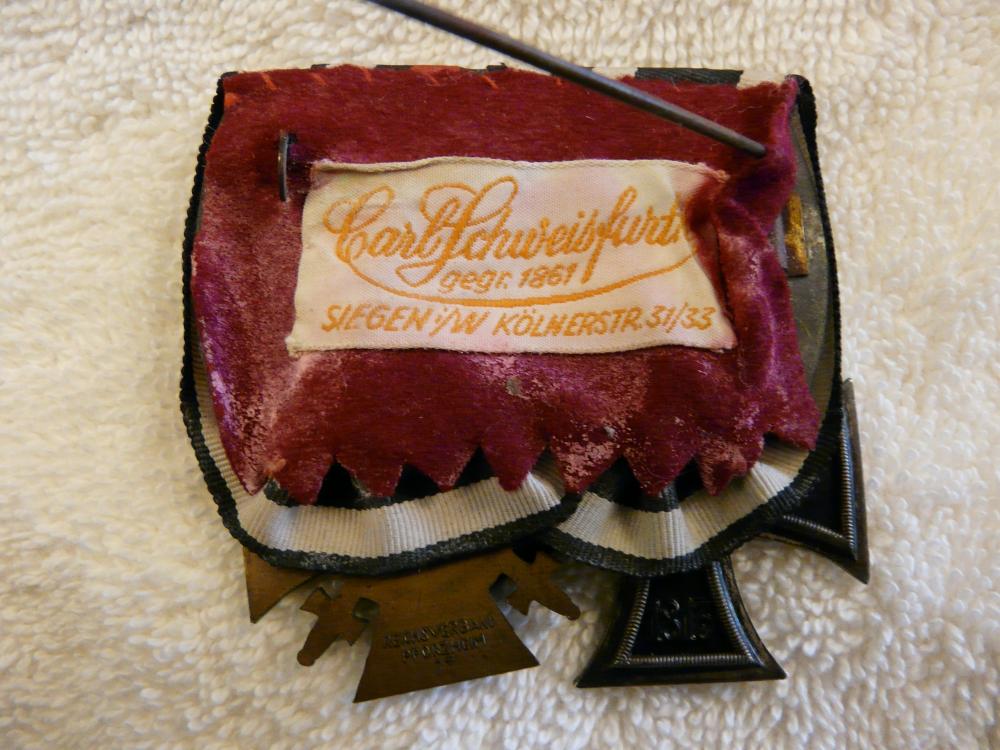
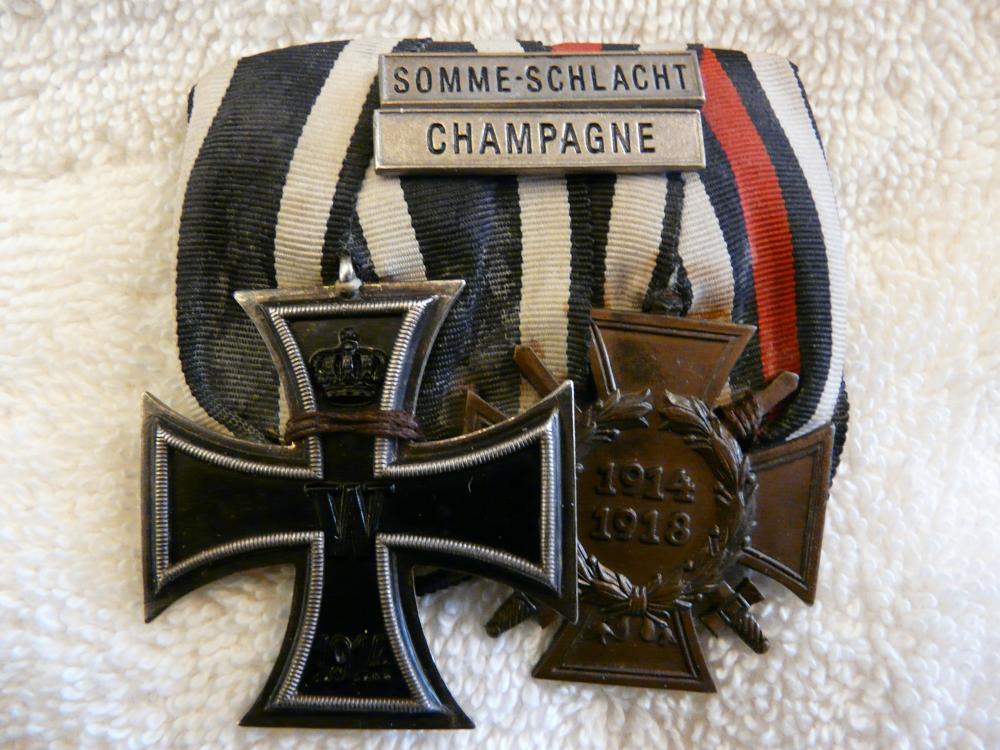

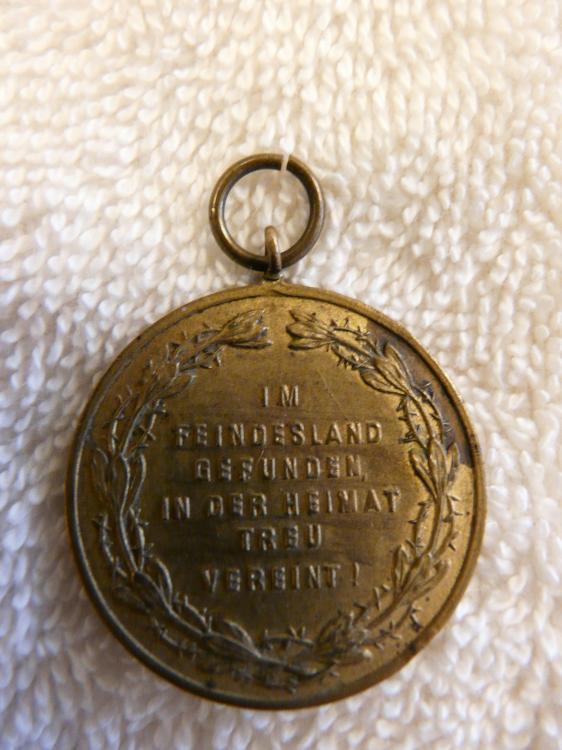
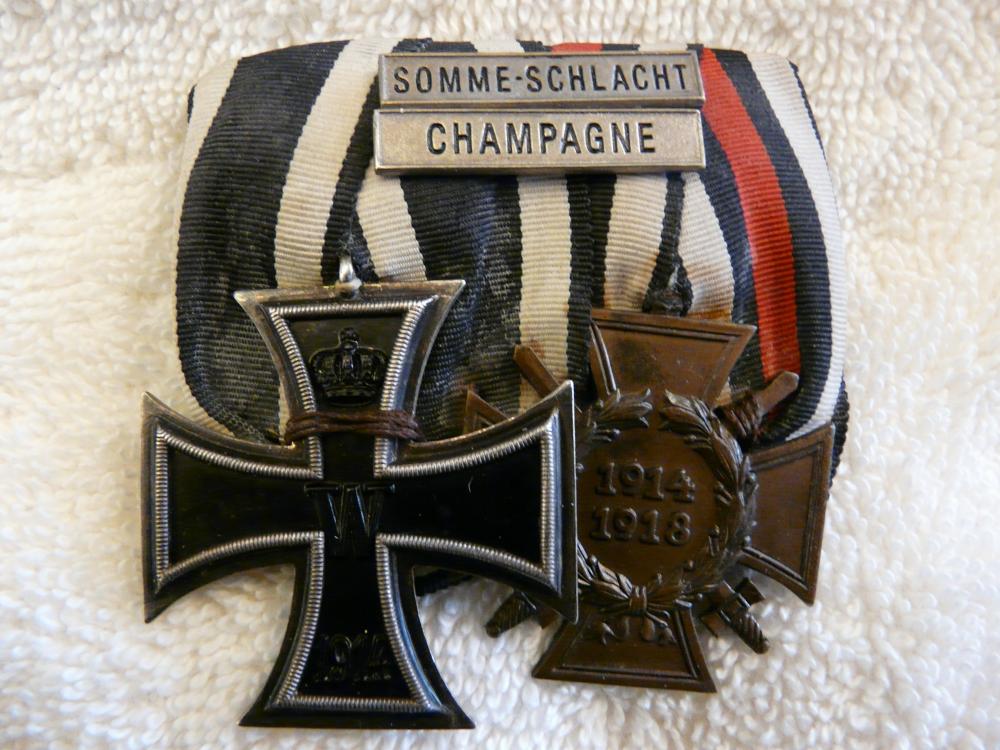
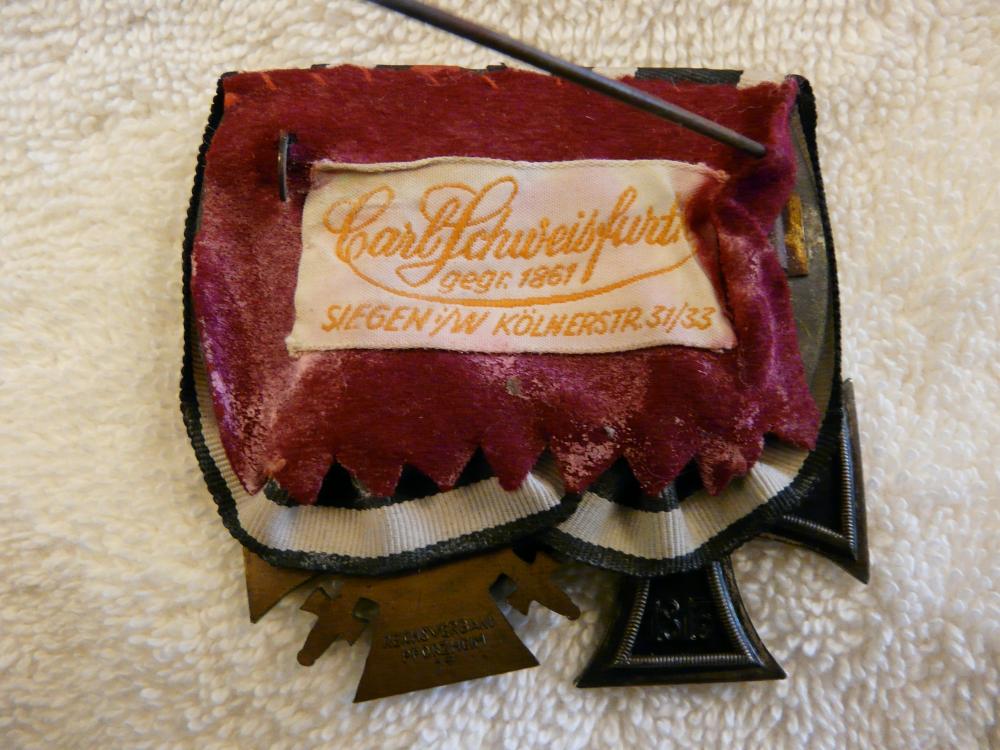
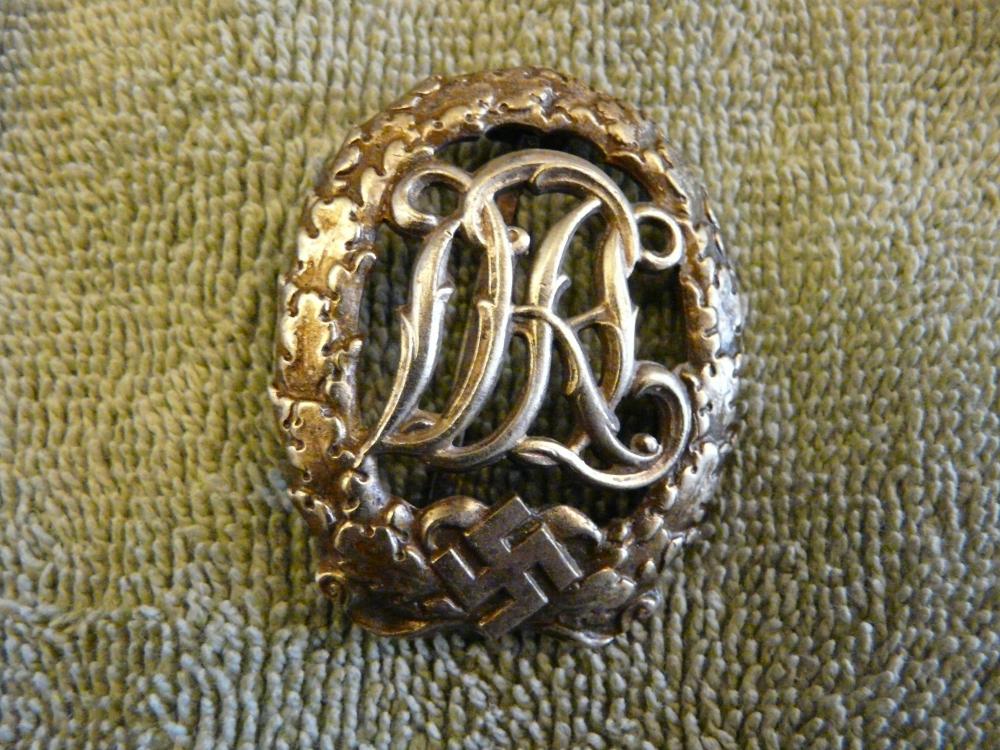
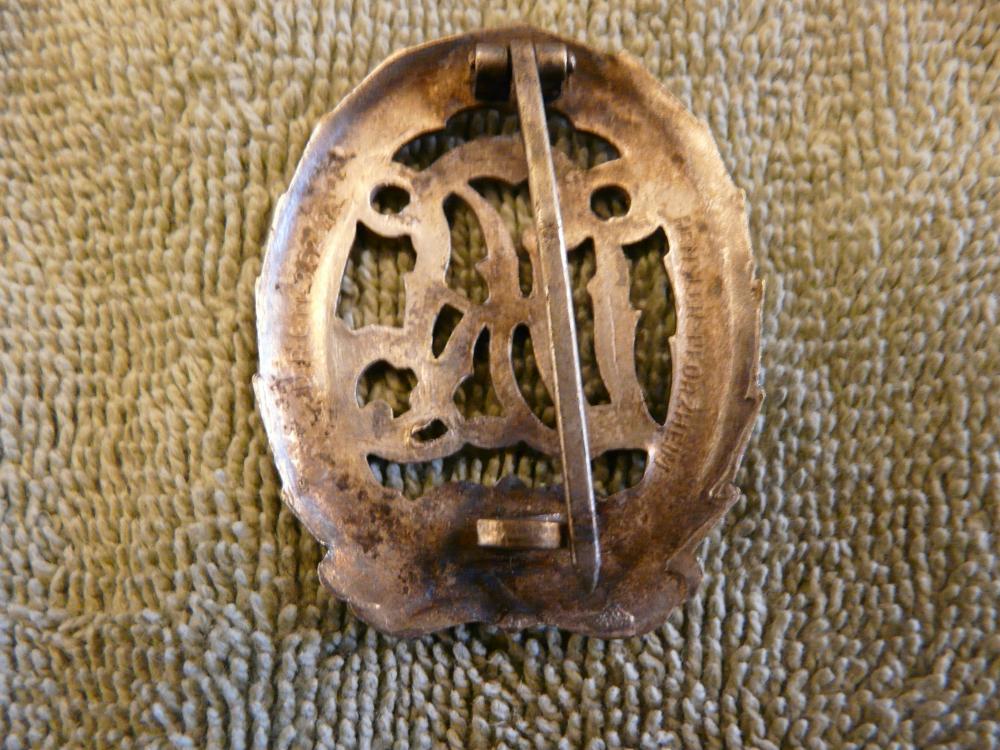
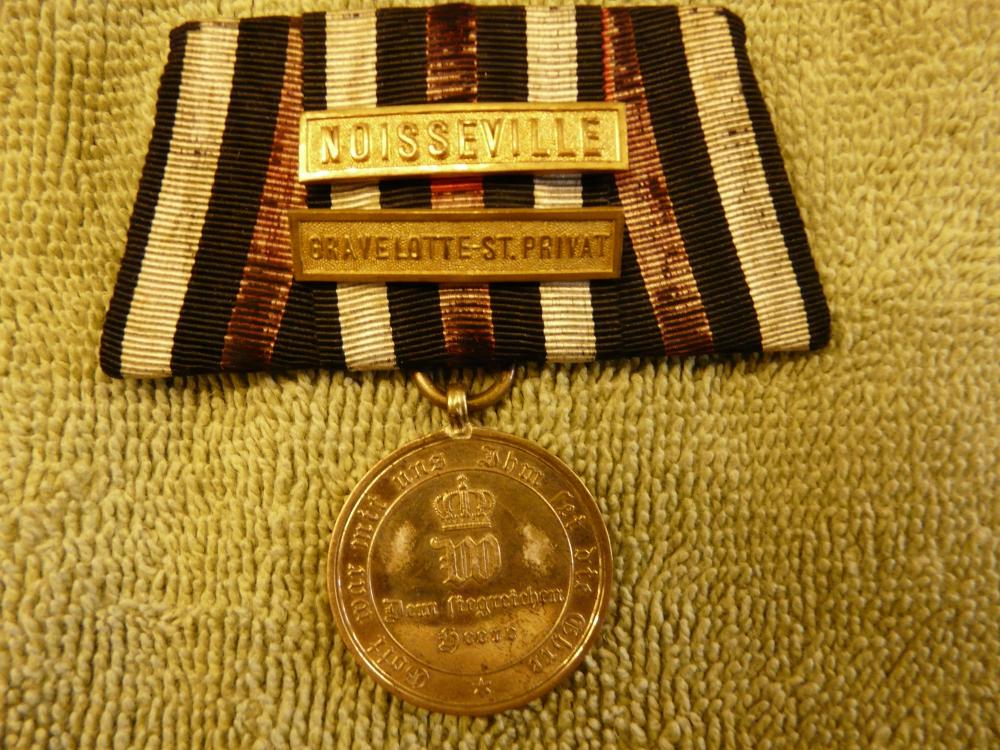
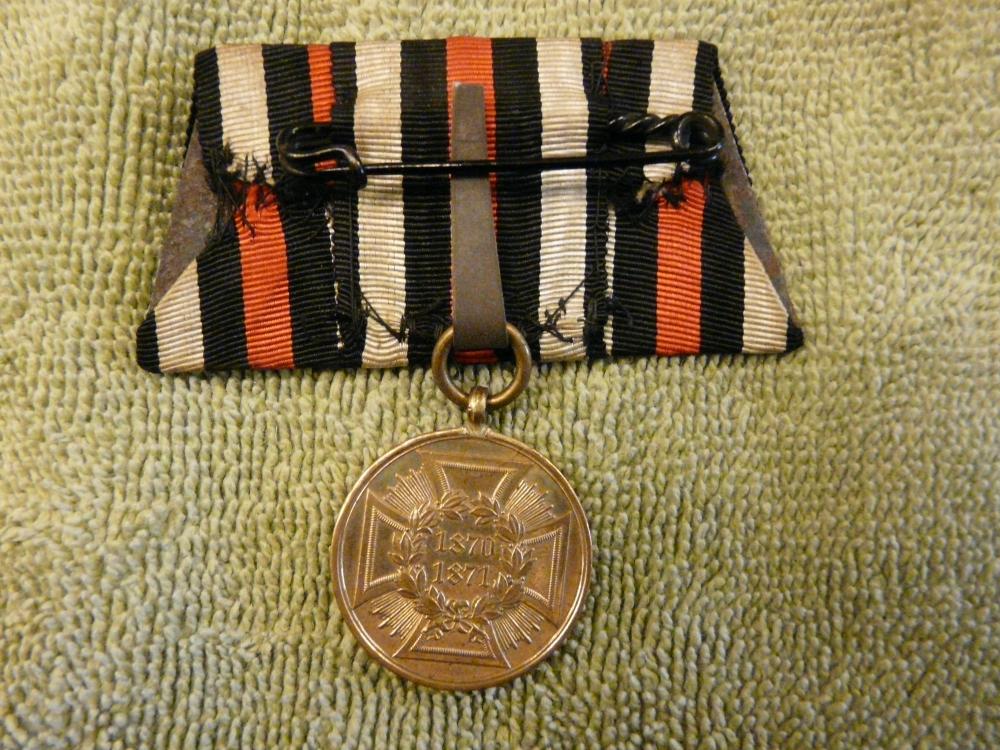
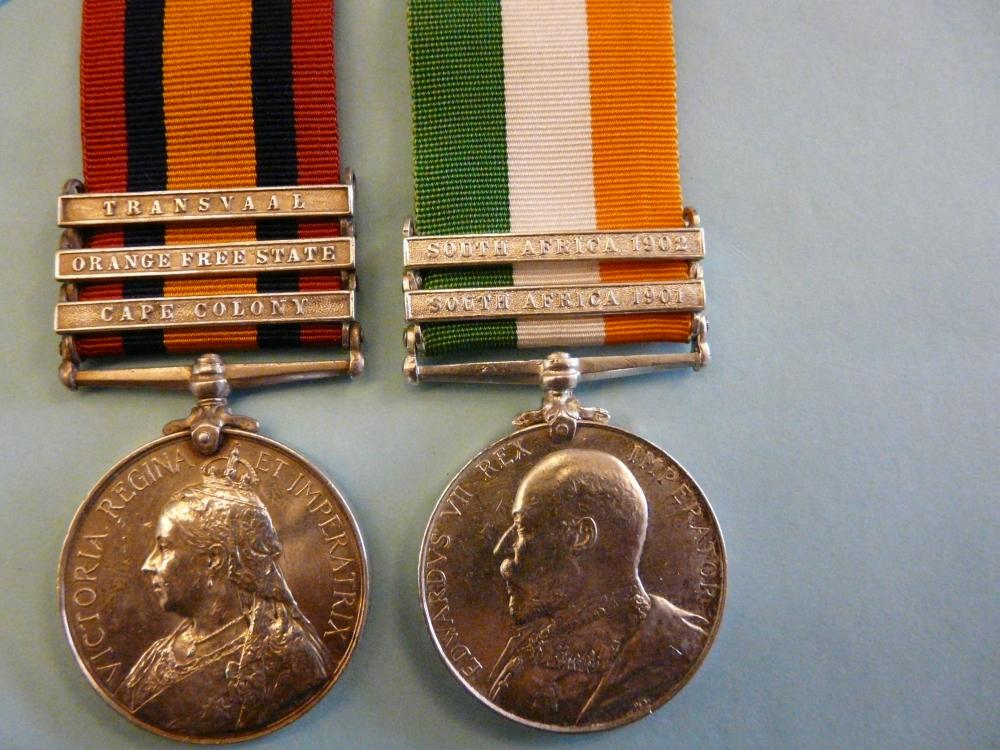
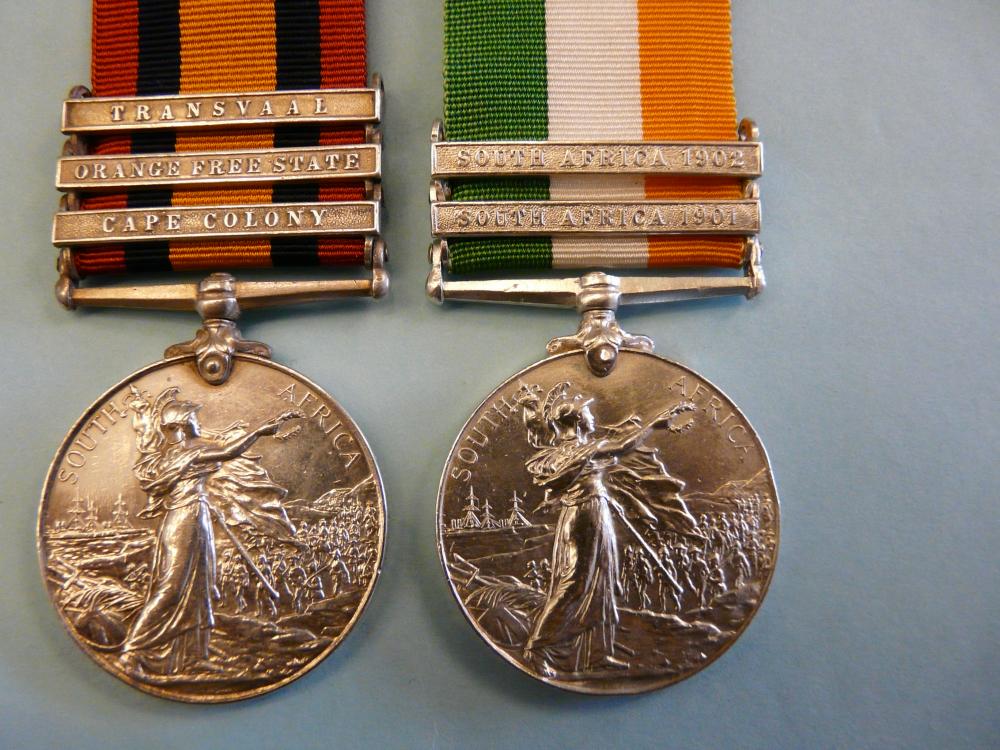
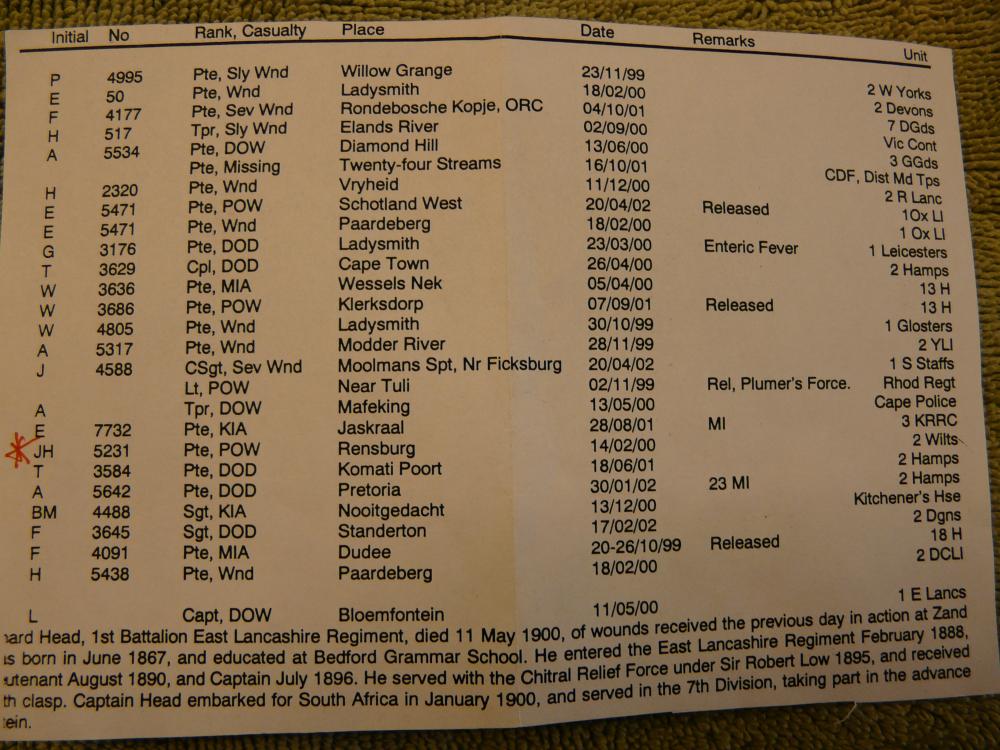
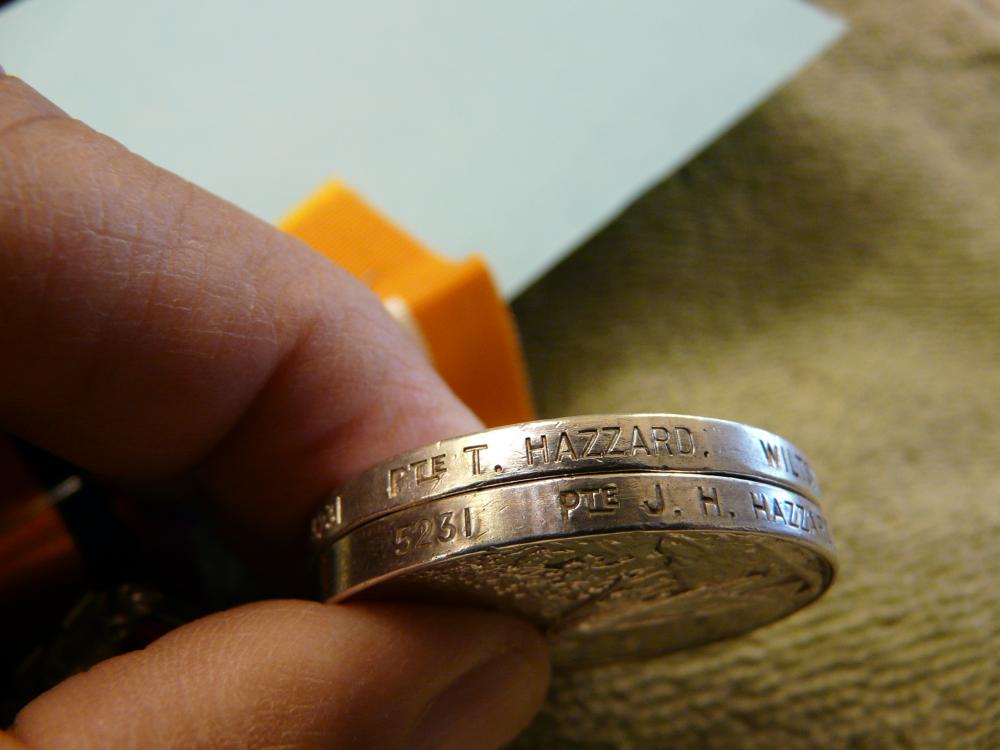
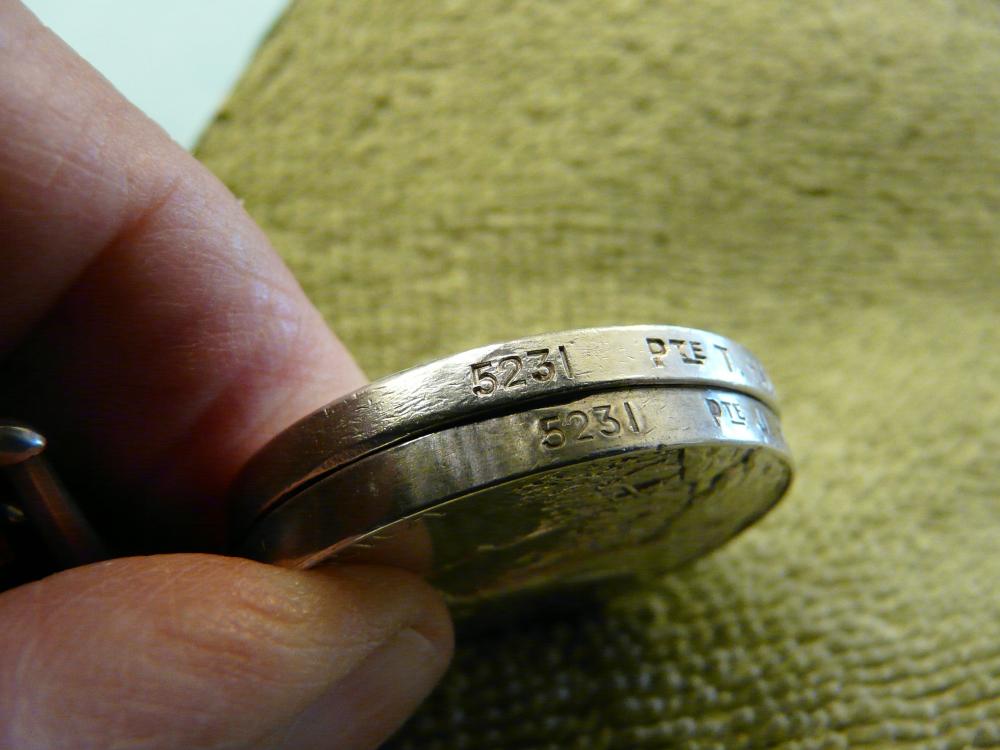
.thumb.jpg.b74fd569b7e14176a4dd74692b864551.jpg)

